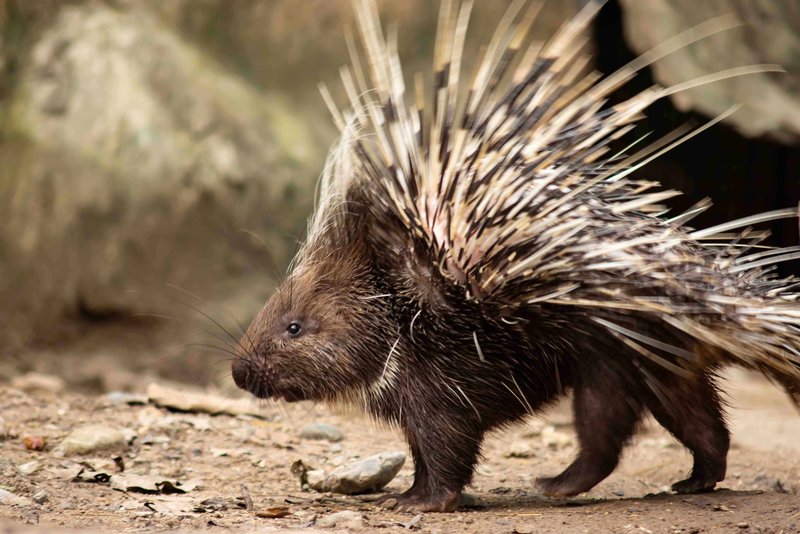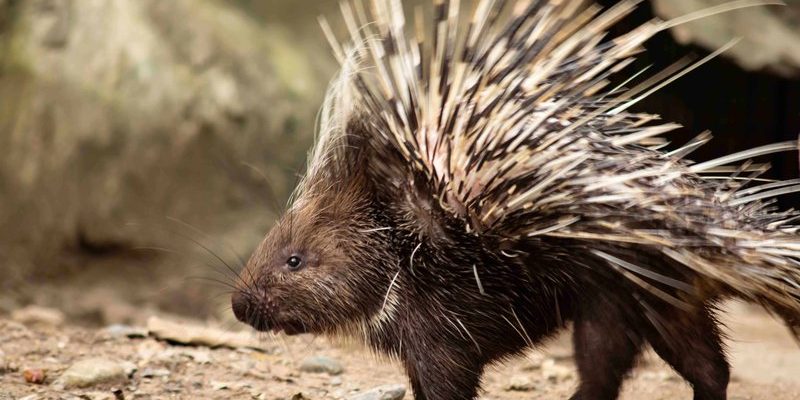
Raising young porcupines is no walk in the park. Imagine being a new parent in the wild, constantly on the lookout for threats while also trying to keep your babies fed and safe. Porcupines have a few tricks up their sleeves when it comes to protecting their young from predators. Plus, their parenting style is as interesting as their quills! Let’s explore their world and understand the fascinating process of how porcupines raise their young.
Porcupine Reproduction: The Beginning of Life
Before we get into the nitty-gritty of parenting, it’s important to understand how porcupine reproduction works. The mating season for porcupines typically occurs in the late fall to early winter. After a gestation period of about 7 months, female porcupines usually give birth to a single baby, called a porcupette. Sometimes, twins are born, though that’s pretty rare.
When a porcupette is born, it’s already equipped with soft quills. They harden shortly after birth, providing immediate protection from potential threats. Honestly, it’s a bit like being born with a built-in suit of armor! The survival instinct kicks in right away, and the little ones learn quickly about their environment.
Nurturing: A Mother’s Care
Once the porcupette is born, it’s solely the mother’s responsibility to raise her young. Porcupine moms are incredibly protective and nurturing. They’ll often stay hidden in their dens, which could be tree hollows or burrows, to keep their babies out of sight from predators. Here’s the thing: porcupines are mostly nocturnal, which helps them avoid many daytime threats.
During the early weeks, the mother will nurse her young, providing essential nutrients to help the porcupette grow strong. Nursing can last anywhere from 4 to 6 months. The mother remains close, using her sharp instincts to monitor dangers and defend her baby. You might be wondering how a porcupine’s quills come into play during this process—well, they certainly act as a deterrent against any potential threats!
Teaching Survival Skills
As the porcupette grows, it’s not just about feeding and sheltering. The mother porcupine also takes on the role of teacher. She’ll gradually introduce her baby to the surrounding environment, helping them understand where to find food and how to identify threats. Imagine a little porcupette watching closely as its mom forages for leaves, fruits, and bark. Learning these skills early is crucial for survival.
Interestingly, young porcupines start to nibble on solid food as early as a few weeks old. They learn by mimicking their mother, slowly becoming independent as they grow. By the time they’re a few months old, they’re almost ready to venture out on their own. However, they often remain with their mother for up to a year before starting their own journeys.
Defense Mechanisms: Nature’s Protection
Porcupines have a famous defense mechanism involving those sharp quills. When threatened, they don’t throw their quills, but they will turn their back to a predator, raising their quills as a warning signal. This is particularly important when it comes to protecting their young. If a mother senses danger, she’ll position herself between the threat and her porcupette, using her quills as an effective shield.
It’s a risky move, but porcupines rely on this tactic and their keen sense of smell to detect danger before it gets too close. The quills act like a warning system for both mother and baby, providing a layer of security in a world full of hazards.
Independence: The Journey Begins
As porcupettes approach the age of 6-12 months, they’re ready to start their own lives. You can think of it as a bittersweet moment for the mother. She’s worked hard to raise her young, and now it’s time to let go. In a way, it’s nature’s cycle—ensuring that the species continues to thrive.
During this time, the young porcupines often linger nearby for a while, exploring their own territory and learning to forage independently. They might even return to their mother occasionally for guidance or protection until they’re completely on their own. This nurturing phase contributes to the survival rate of the young, as they transition into adulthood.
The Role of Social Structure in Porcupine Families
You might be surprised to learn that porcupines are mostly solitary animals. While they don’t form traditional family groups, the bond between the mother and her young is strong. That being said, porcupines sometimes gather in small groups when food is abundant, sharing space while still respecting each other’s space.
This unique relationship allows for some social interaction to occur, but it generally ends when the young leave to start their own lives. It’s fascinating to consider how solitude and parental bonds can coexist in the life of a porcupine.
Challenges in Raising Porcupines
Raising young porcupines isn’t without its challenges. While these animals have built-in defenses, they still face threats from predators like coyotes, foxes, and even humans encroaching on their habitats. Deforestation and habitat loss can make it difficult for porcupines to find safe spaces to raise their young.
Additionally, as habitats change, food sources may become scarce, complicating the mother’s efforts to nurture her porcupette. In the face of these challenges, porcupine mothers showcase resilience, adapting their strategies to keep their young healthy and safe.
In summary, porcupines have a fascinating approach to raising their young in the wild. From the moment a porcupette is born, its mother becomes a protective force, teaching essential survival skills and using instinctual defenses to keep them safe. It’s a beautiful example of nature’s determination to ensure the next generation grows strong and independent.
Understanding how porcupines nurture their young gives us insight into the broader world of wildlife parenting. So next time you see one of these prickly creatures, remember the hard work and love that goes into raising their little ones. Nature has a way of making seemingly simple things incredibly complex and beautiful, and porcupines are no exception.

